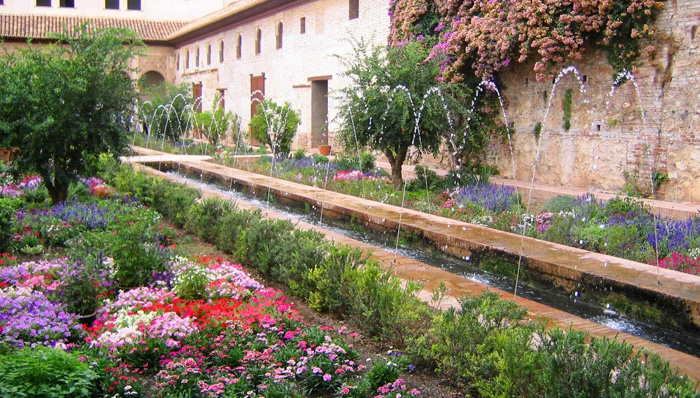“THE city has adorned herself with flowers of sweet scented herbs,” waxed the great Arab traveller, Ibn Jubayr, when he visited 12th-century Damascus. “It is encircled by gardens as the moon by its halo.” Later European travellers were no less entranced by the dazzling turquoise square—Naqsh e-Jahan, “the image of the world”—that Abbas I built in Isfahan in the 17th century, leaving behind accounts of its splendours as well as of a host of other such leafy delights as drinking excursions on the banks of the Barrada River that flows through Syria’s capital. The Prophet Muhammad is even said to have shied from entering Damascus, otherwise called al-Fayha, “the fragrant”, for fear of entering Paradise twice.
He would have no need for hesitation today. Amid the bloodshed, car fumes and noise, residents are hard-placed to find anything fragrant in the sprawling cities of the Arab world. The number of places where people can mingle, picnic on cool watermelon by the rivers and fly kites has shrunk while their populations have soared. Per person, the amount of land devoted to parks, squares and other public spaces in Riyadh, for instance, has fallen by 80% in half a century. Public spaces now comprise just 2% of the area of Middle Eastern cities compared with 12% in the average European city, according to UN Habitat, an agency that monitors urban development in part through satellite imagery. They make up just 0.5% of Beirut.
“Historically parks were places for poetry, debates and tales of debauchery on the edge of the city, but the cities swallowed them as they grew,” says Nasser Rabbat, an expert on Islamic architecture at the Massachusetts Institute of Technology, who co-wrote a new book on Islamic gardens.
Greed is partly to blame, says Jala Makhzoumi, an Iraqi urban planner who has drafted plans for re-greening capitals across the Arab world. Unaccountable tycoons find ways to turn public spaces private. Local governments are often unwilling or unable to stop them. Developers, for instance, have recently fenced off one of Beirut’s last stretches of natural waterfront to build more gated high-rises. Its prime beach is now earmarked for a luxury hotel. Warlords-cum-politicians have appropriated Baghdad’s finest palm groves, and carved its plushest neighbourhoods into walled enclaves.
Carelessness is another culprit. Half of the Arab world’s modern cities are, in effect, unplanned, says Eduardo Moreno, the research director at UN Habitat. Palestinian refugees have turned much of Beirut’s largest green space, the once-forested Horsh Beirut, into a camp; Israel set fire to the rest in its invasion of 1982. Closed for decades, the Horsh reopened last year, but only on a Saturday, and only if you get a ticket from the local government in advance.
Nicer cities might attract more tourists—a huge boon for countries that need to diversify their economies as oil revenues plummet. But since the 2011 Arab spring, when the people took over squares to stage protests, security concerns have trumped any other. Egypt’s generals have ringed the roundabout in Cairo’s Tahrir Square with iron grating. Bahrain’s King Hamad has levelled the Pearl roundabout where his subjects protested, and turned it into a traffic junction. “The ruling class across the Arab world are very much aware of potential of public space for people to gather, share their grievances and ultimately protest,” says Mr Rabbat.
Municipal officials point to the plethora of private malls as safe, clean spaces where families can mix and consume. But the environment there is as regulated as the air-conditioning. Security guards in Riyadh prevent the entry of single men, and stand ready to evict anyone who might even consider causing a disturbance. “Urban values of civil participation are almost absent in the Arab urban context,” sighs Rami Nasrullah, a Palestinian city planner who researches Arab urban growth.
Some Arabs hope things will change. Over the past year, tens of thousands of people have repeatedly thronged to Baghdad’s Freedom Square, next to the Green Zone, the vast enclave where the government rules. The Aga Khan has turned a Cairo rubbish dump into the city’s largest park (though you need a ticket to enter). In an attempt to greenify a square in Gaza, one of the world’s most densely populated areas, for its rallies, the Palestinian Islamist movement, Hamas, dragged tons of turf through its tunnels under the border with Egypt. Environmentalists in Lebanon have, at least, stopped the construction of a highway through Ashrafiya, Beirut’s Maronite core. But when last summer they began to mass in the city’s Martyrs’ Square to protest at a pile-up of rubbish, riot police quickly dispersed them. For now, the Arabs’ best open place is cyberspace.







Comments